Idaho’s diverse and breathtaking landscapes offer thousands of miles of hiking trails, making the Gem State a haven for outdoor recreation. However, as more people discover the beauty of Idaho’s wilderness, it becomes increasingly important to share educational messaging about responsible hiking practices, like planning ahead and packing out trash. Not only does this help protect the delicate ecosystems that make Idaho so special, but it ensures that everyone can enjoy these areas for years to come.
Whether it’s a nature walk or a high-elevation trek in the Sawtooths, these practices can help preserve Idaho’s beautiful hiking trails:
Plan Ahead and Know Your Route
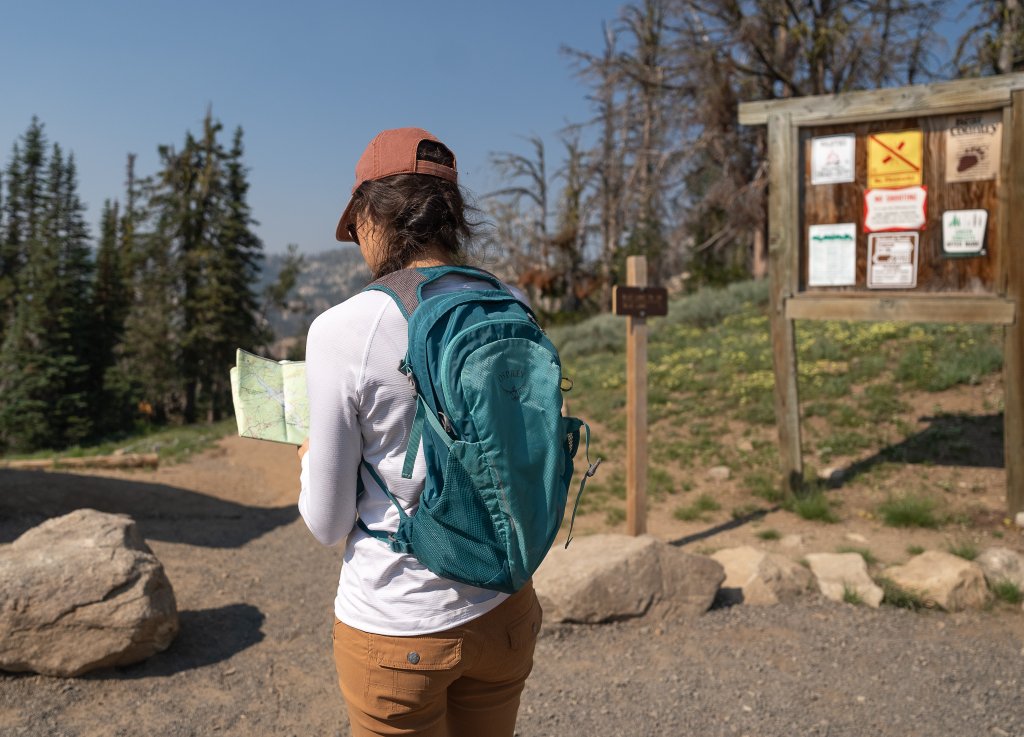
From getting lost to being stranded without proper attire or equipment, the majority of hiker rescues can be attributed to a lack of planning. Before hitting the trail, research the area to understand its terrain and regulations or use restrictions. In addition to checking trail reports online, consider calling or stopping by local ranger stations for the most up-to-date information. While digital navigation tools (i.e., GPS devices and hiking apps, like Gaia) are convenient, you should always bring a paper map and a compass as backup.
Weather can change rapidly in the mountains, so know the forecast before you go to avoid being caught in thunderstorms, precipitation, wildfires or extreme heat. “We receive a large number of calls in which a person(s) planned to be out for a few hours, but they got lost and the weather began to decline and they were ill prepared for below freezing temperatures or snow,” says Kelsey Chereskin, Public Relations Director for Idaho Mountain Search and Rescue. Proper clothing, like moisture-wicking materials for hot days or waterproof jackets for rain, ensure that you will stay comfortable and safe. “It is also important to remember the phrase ‘cotton kills,’” adds Chereskin. “Cotton does not allow quick evaporation, and it will remain wet and therefore cold, contributing to hypothermia in severe cases.”
Always inform a friend or family member about your intended route, expected start and finish times and any changes to your itinerary. This is especially important if you’re hiking in more remote areas where you might not encounter other hikers for hours, or even days. Consider hiking with a companion, as it is statistically safer than hiking alone.
Planning also involves assessing your own physical fitness and experience level, so it’s important to choose a trail that matches your abilities. Overestimating your fitness or underestimating the difficulty of a hike can lead to exhaustion, dehydration or injury. Factor in time for breaks, snacks and hydration to ensure you have enough energy to complete the hike safely. It’s better to finish feeling strong than to push yourself and risk injury.
Pack the Right Gear
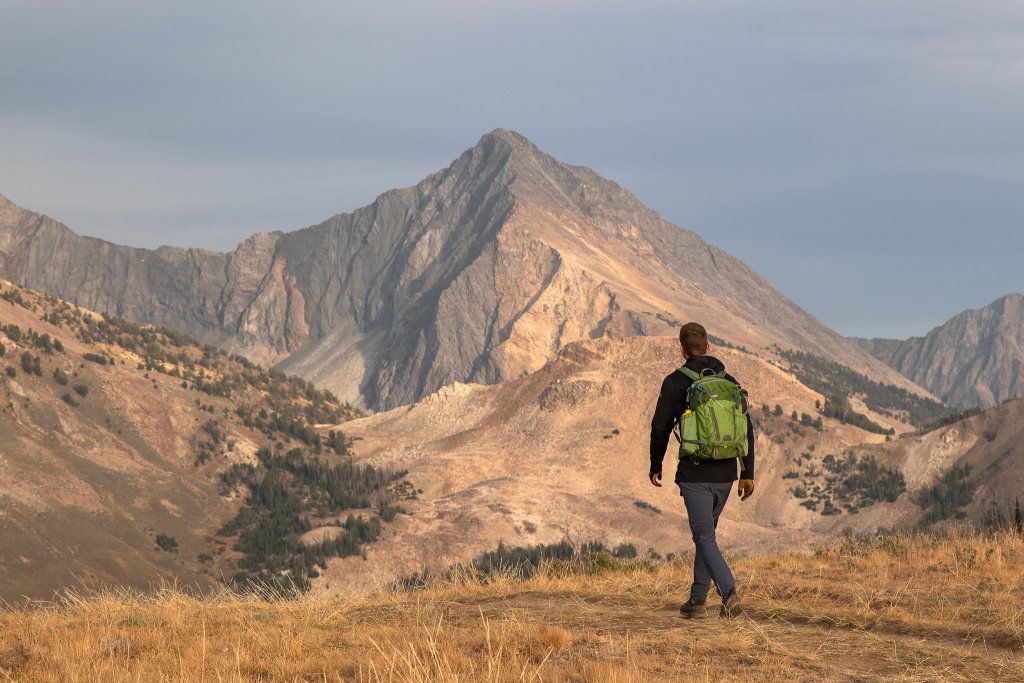
Even if you’re embarking on an easy day hike, you never know what you might encounter, so it’s best to be prepared for any number of scenarios. You may not be able to rely on a cell signal or fellow hiker for help, so if you are stranded on a trail after dark, do you have what you need? Or, if you run into another party who needs a hand, would you be able to assist them? If your phone dies and you don’t have a paper map, do you know how to navigate back to the trailhead? From inclement weather to broken ankles, having the right gear is key to comfort and in some cases, survival. These are items every hiker should have in their pack:
- Water
- Food
- Extra layers of clothing
- Sun protection
- First aid kit
- Pocket knife
- Headlamp or small flashlight
- Bear spray (if hiking in bear country)
- Paper maps and compass
- Portable charge packs
- Satellite communication device (more on this below)
If backpacking and spending the night in the backcountry, you’ll want to add items like a water filter, a portable stove, fuel and a lighter, along with camp gear (tent, sleeping bag and sleeping pad) and kitchen supplies (utensils, mug, etc).
Invest in a Satellite Communication Device
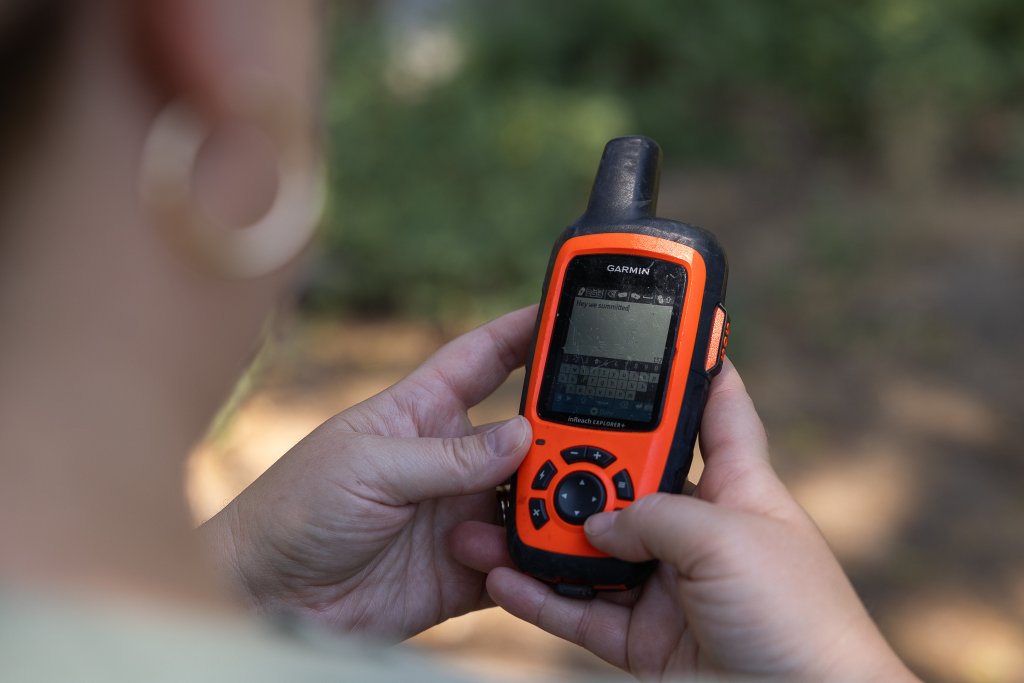
When venturing into remote areas with limited cell service, a satellite device is a crucial piece of emergency equipment. Unlike cell phones, which often lose signal in rugged, isolated landscapes, satellite devices provide reliable communication no matter where you are. This ensures that help can reach you quickly, minimizing the need for risky actions, like lighting signal fires or abandoning an injured partner to hike out alone in search of assistance.
One of the most popular satellite devices is a Garmin InReach (pictured above), which offers messaging, an SOS button, weather and tracking abilities. Apple recently introduced an emergency SOS feature powered by the Globalstar satellite system, and many satellite devices allow you to use messaging and mapping features on your smartphone via a Bluetooth connection. However, relying on just one of these devices can be risky, so it’s best to bring both when possible. Before embarking on a trip, fully charge your electronics and ensure subscriptions are activated and updated. Emergency features can rapidly deplete batteries on phones and satellite devices, so a portable charge pack is another worthwhile investment. On that note, it is wise for multiple members of a hiking party to bring their communication devices.
Stay on Trails
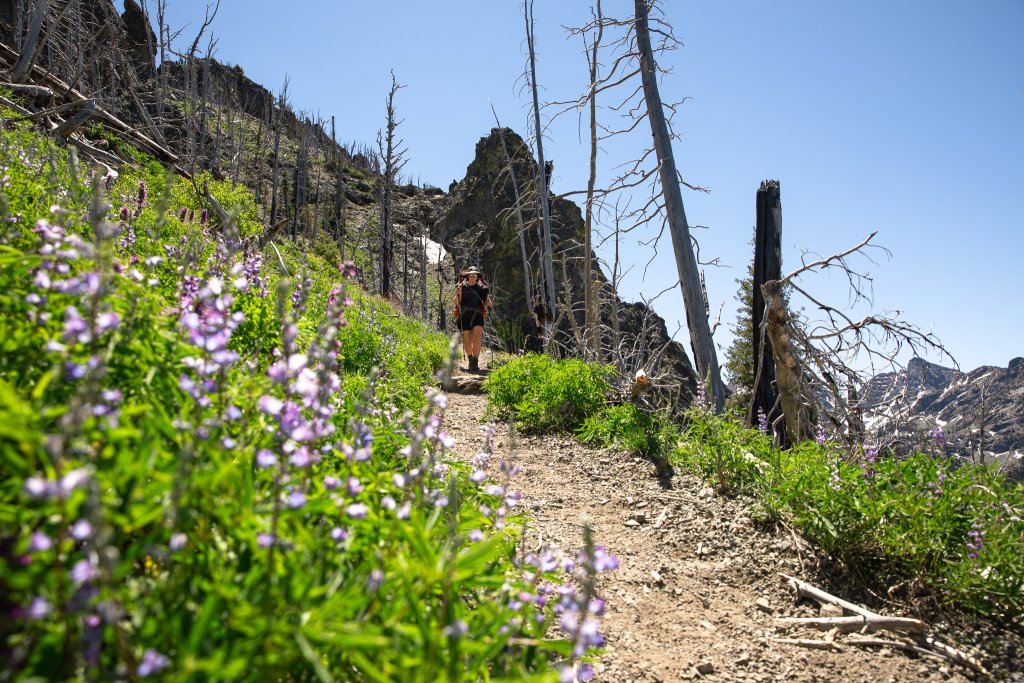
When hikers venture off trail, they risk trampling fragile vegetation, disturbing wildlife habitats and causing soil erosion, all of which can have lasting negative effects on the environment. Going off trail also increases the risk of getting lost or injured in unfamiliar, unstable terrain, which can lead to complicated search and rescue (SAR) operations. In fact, according to a widely cited 2019 study, wandering off trail accounts for the majority of lost hikers.
Additionally, use caution when referencing unofficial trip reports and routes posted on user-generated content apps, like AllTrails. Some app users may unknowingly share routes with closed sections, which can result in other hikers attempting to access restricted or potentially dangerous areas. Instead, look for official maps with detailed trail information, which are often available online (via the websites of Idaho State Parks and agencies like the U.S. Forest Service) or at rangers stations.
What Is a Social Trail?
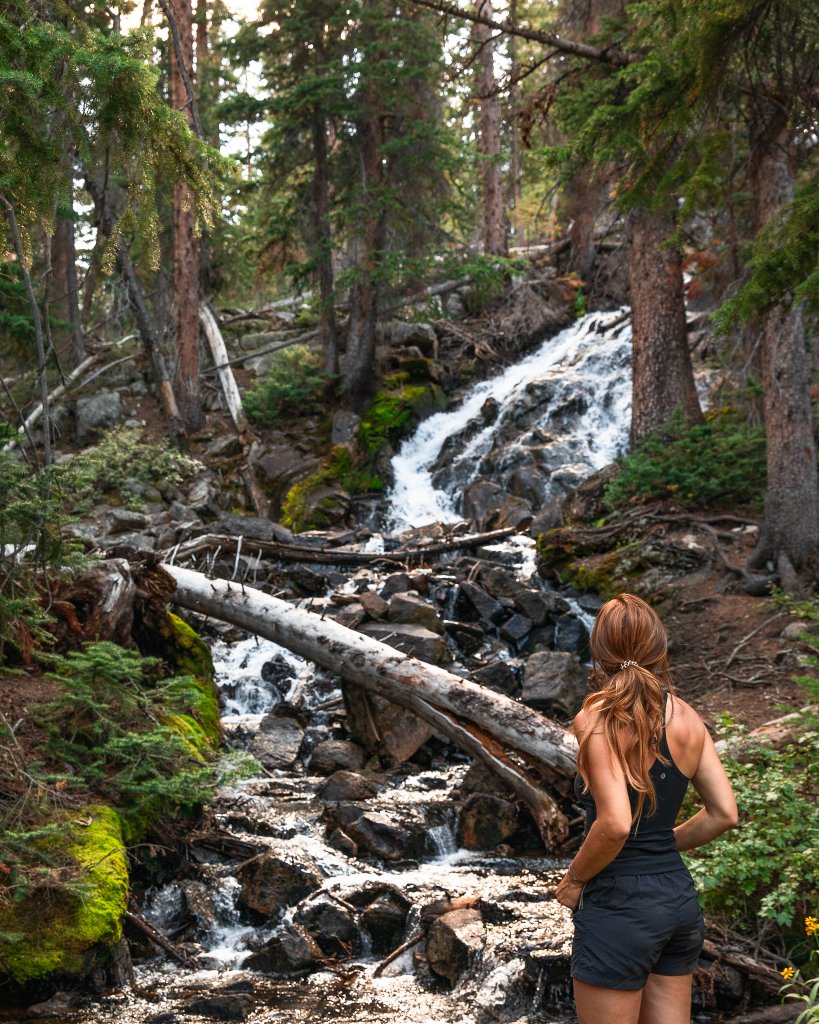
While hiking off trail may be prohibited in some areas (e.g., locations where habitat restoration efforts are taking place) generally speaking, it’s not illegal, and there are some instances where it is acceptable. For example, if you’re on a hike and you need to use the bathroom, you should venture off the trail and find a suitable spot (more on that below). Likewise, if you’re bushwhacking through a remote area on a hunting trip, you won’t be on an established trail, either. When traveling off-trail is necessary, it’s important to avoid hiking in sensitive environments like alpine meadows and cryptobiotic soil, and off-trail travel should never be used as a shortcut. Off-trail travel requires advanced navigation skills, so unless you’re confident in your abilities and have the right tools, you should not attempt to hike off of designated trails.
Pack Out Your Trash
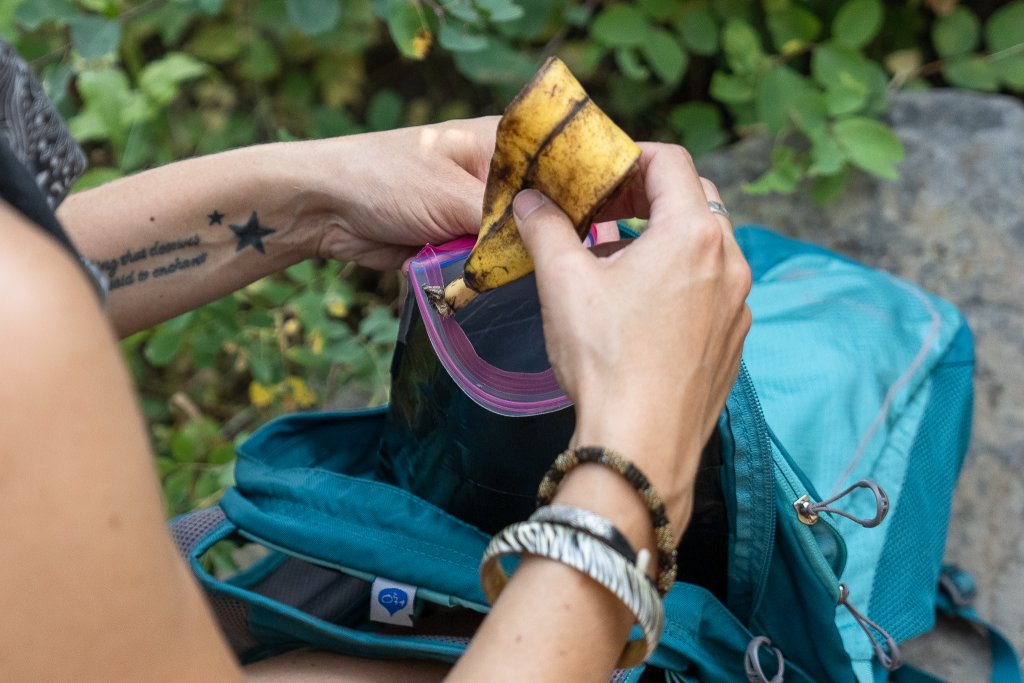
While most hikers know not to toss a granola bar wrapper on the trail, biodegradable items like fruit peels, nut shells and toilet paper are considered trash as well, and need to be packed out. Food waste and toilet paper don’t always decompose quickly in the wild, and they can introduce non-native species and pathogens, which can have devastating effects on local flora and fauna. Feeding wildlife—even inadvertently by leaving behind food waste—can disrupt natural foraging behaviors and make wild animals dependent on human food. Plastic bottles, snack wrappers and cigarette butts can take years to break down, and they can leach harmful chemicals into the soil and water. Beyond protecting the environment, a litter-free landscape ensures other hikers can enjoy Idaho’s stunning outdoor spaces, too. Carry a small, leak-proof trash bag to collect your waste, and consider picking up any trash you might find along the trail. If a trailhead trash can is close to capacity or overflowing, it’s best to find another location to dispose of your garbage.
Watch the video: Travel With Care: Don’t Trash It
If nature calls, find a spot off the trail, and if urinating, aim for rocks, gravel and dirt, rather than plants. For solid human waste, find a spot 200 feet from the trail (and 200 feet from water sources) and dig a six-inch hole. Once you’re done handling your business, cover the hole and remember to pack out your TP. Alternatively, you can use a waste alleviation and gelling (WAG) bag, which has chemicals that help neutralize human waste, making it safe to dispose of the bag with other trash. A reusable pee cloth, like the Kula Cloth, is a staple for many hikers, and a portable travel bidet, like the Happy Bottom or CuloClean, can also help reduce the amount of toilet paper you use on the trail.
Be Bear Aware

Hiking in bear country requires extra preparation, from learning how to avoid encounters to knowing how to handle attacks. Idaho is home to both black bears and grizzly bears, and while attacks are rare, they can still occur. Before your hike, take note of trailhead signage about bear activity, and consider chatting with local rangers for the latest updates. Always keep a can of bear spray accessible, as it is one of the most effective ways to deter an aggressive bear. Bear spray is a high-powered pepper spray that can reach a distance of approximately 25 feet, and it is most commonly carried via a holster on the waist belt of a backpack (pictured above). If you’re backpacking in bear country, be sure to store your food properly, either in a bear can or a bear hang, so as not to attract bears to your backcountry campsite.
For more information, please read Travel With Care: Safety in Bear Country
Make plenty of noise on the trail, as most dangerous encounters occur when a bear has been startled. When hiking in dense vegetation or near loud streams, it’s especially important to let your presence be known by talking loudly, shouting (you may hear hikers yell, “Hey bear!”), clapping or attaching bear bells to your backpack. Avoid hiking in the early morning and late evening, as bears are most active during these times, and keep your eye out for scat, bear tracks and scratches on trees. If you’re hiking with a dog, keep your pet on a leash or under strict voice command, so they do not attempt to chase bears or other wildlife. Furthermore, studies have shown that groups are less likely to experience bear attacks than solo hikers.
If you spot a bear on the trail, talk calmly in a low tone and slowly wave your arms. Never scream, run or approach the bear, as this may trigger it to chase you; instead, keep the bear in your sight and slowly move away. If a bear continues to approach, stand your ground, make noise and appear as large as possible by raising your arms. If the bear gets within 20 to 30 feet, this is the time to deploy your bear spray. If you are attacked by a black bear, fight back by punching or kicking the animal in the face. However, if you are attacked by a grizzly bear, Idaho Fish and Game recommends that you play dead, lay flat on your stomach and clasp your hands behind your neck to protect yourself. Please note: these are general guidelines for bear attacks, and you should always check with local wildlife management officials if you have questions.
Published on July 7, 2025

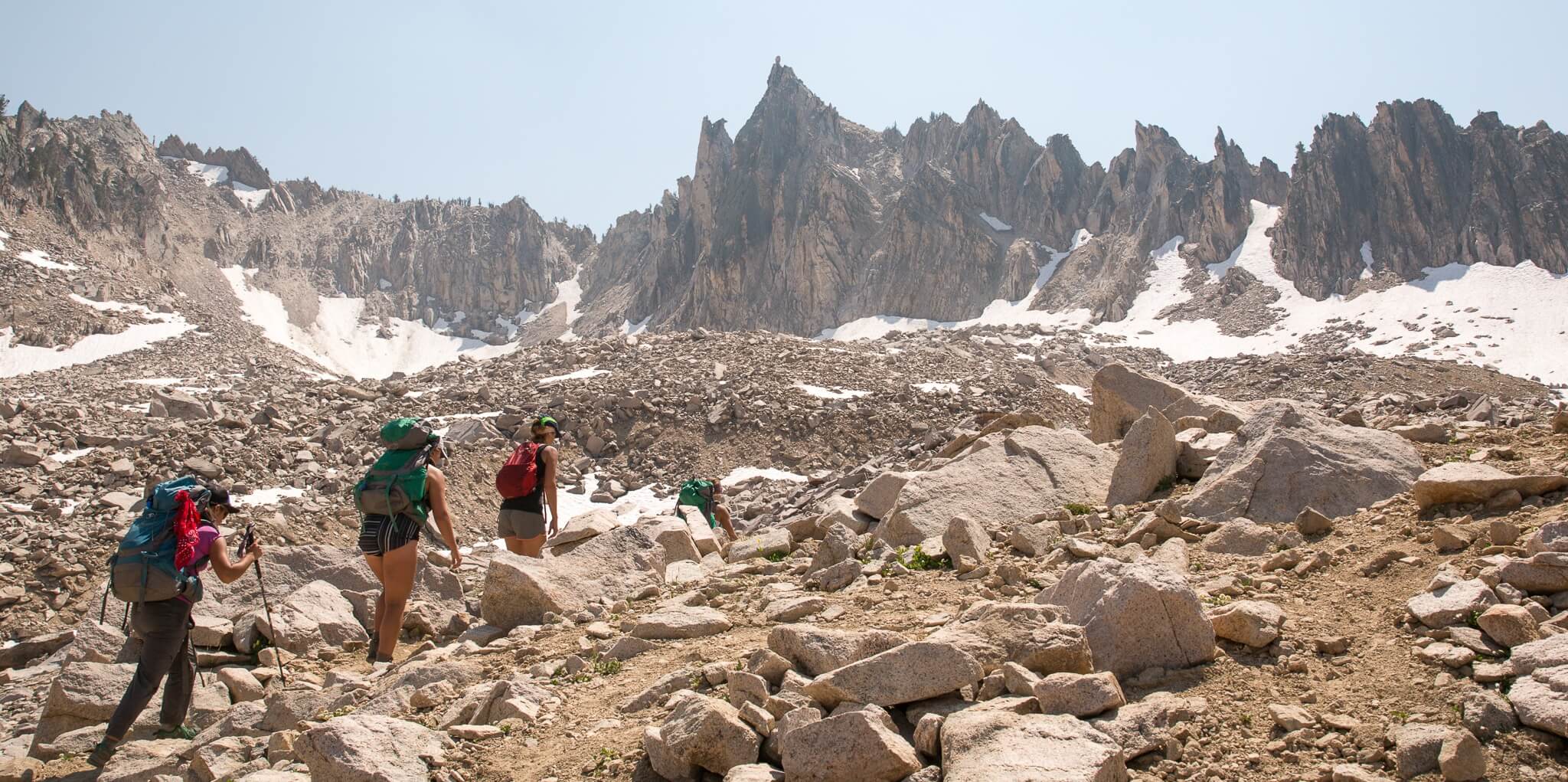




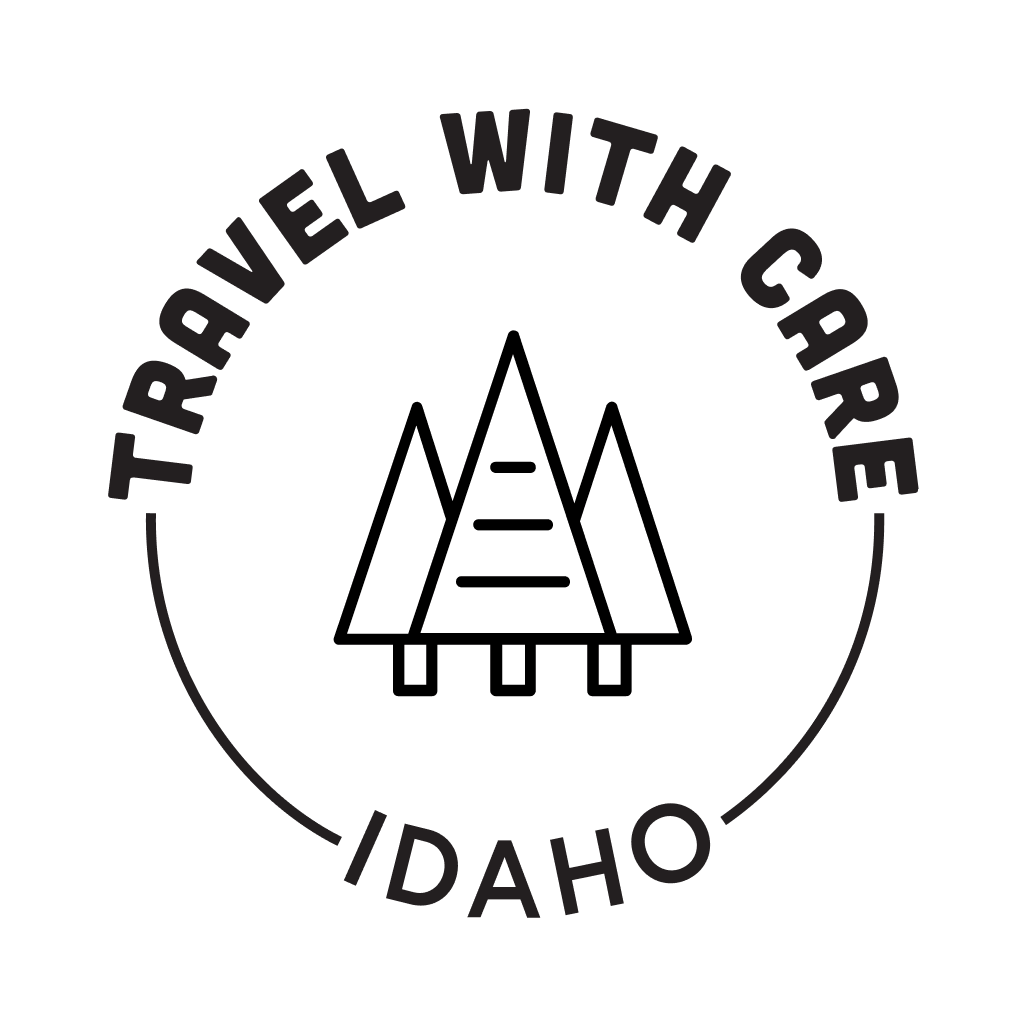
Elisabeth Brentano is a writer and photographer based in California, but her passion for nature takes her all over the world to produce travel and environmental content. You can follow her at @elisabethontheroad on Instagram.